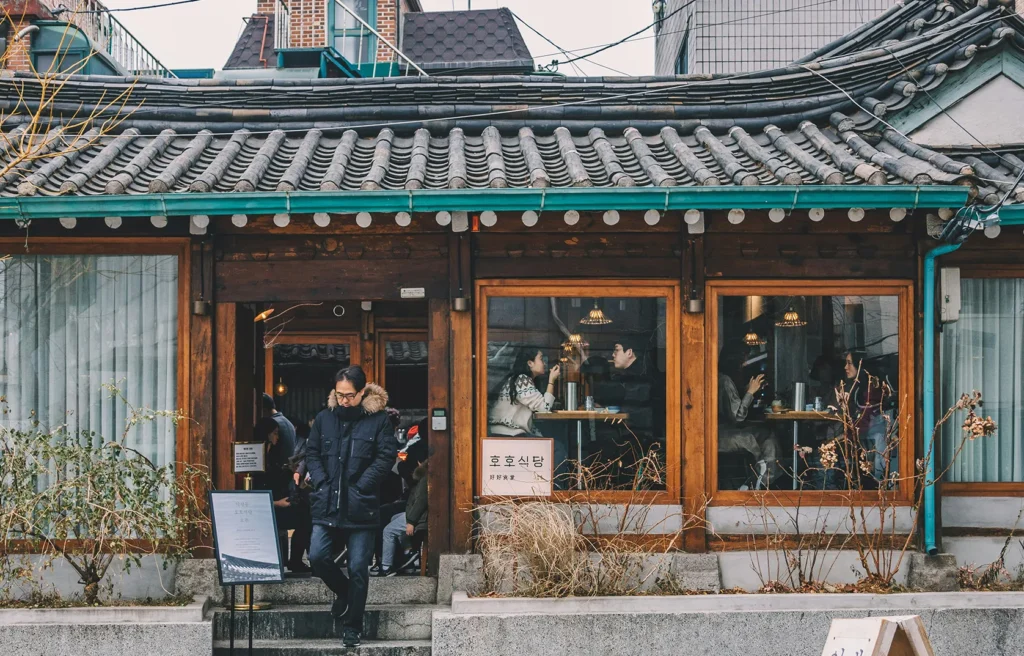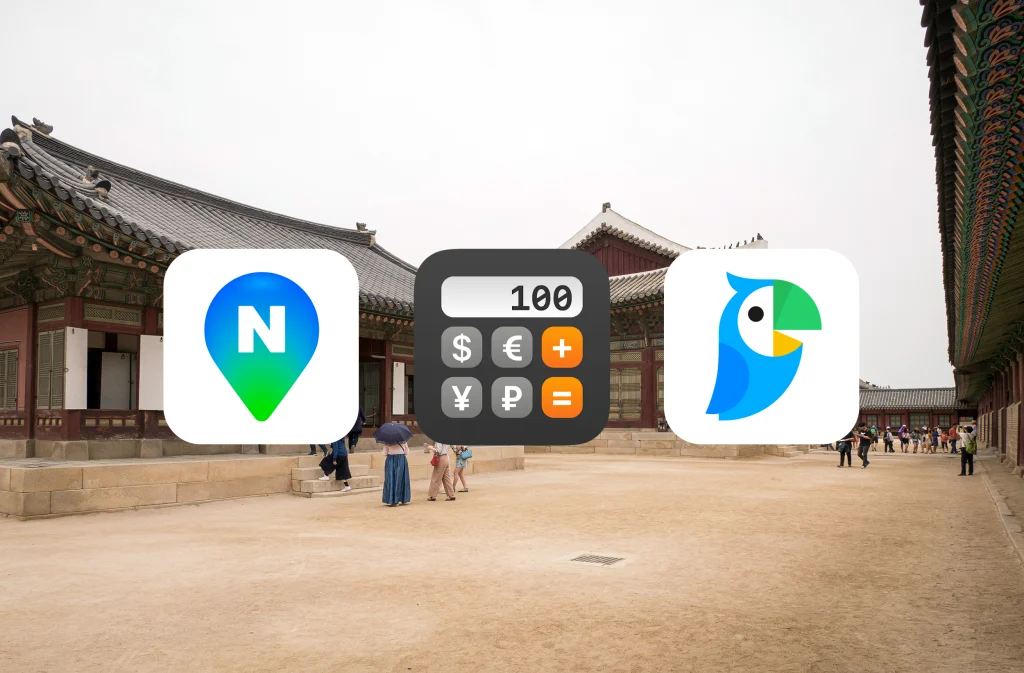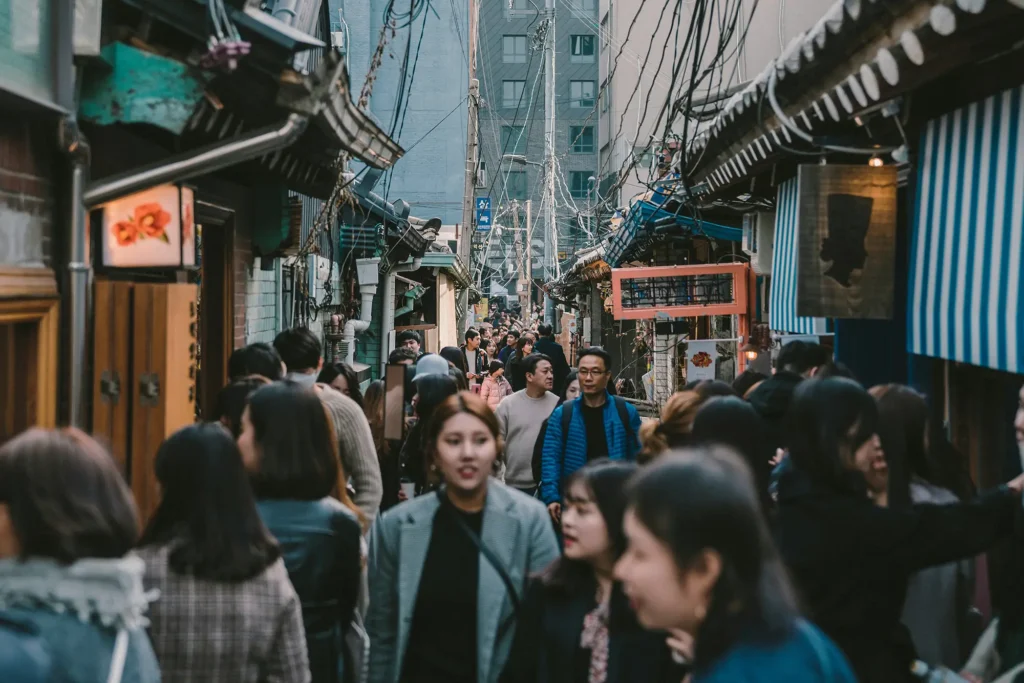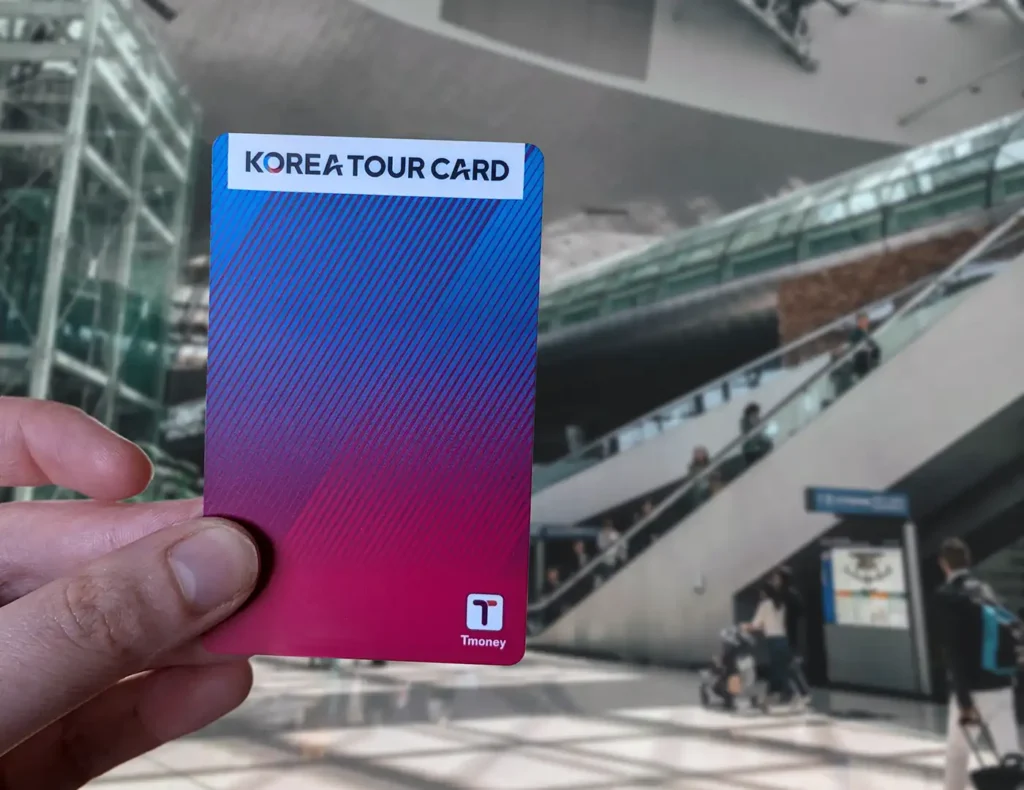First, let’s understand South Korean currency
South Korea uses the South Korean Won (₩). While the notes and coins are straightforward, the larger denominations can feel a bit overwhelming at first, especially compared to currencies like the U.S. Dollar or British Pound. We found this confusing at first but once you get used to the conversion rates, it’s much easier to understand the cost of things.
When you don’t need cash
Throughout our trip, we used our Visa and Mastercard without issue in most places in Seoul, including:
Restaurants & Cafes
From trendy cafes to authentic restaurants, card payments were the norm. Quick tip: There’s no tipping in South Korea.
Retail Stores
Though we didn’t do a lot of shopping, places like Daiso had cashless self-serve checkouts.
Convenience Stores
Chains like 7-Eleven and CU accepted cards for everything.
Palaces & Attractions
All tourist areas we visited catered to card payments.
When you will need cash
While cards are widely accepted, there were times we needed cash:
Traditional Markets
If you’re craving traditional Korean street food, and are planning to visit one of Seoul’s famous markets, like Namdaemun or Gwangjang Market (which we personally explored). We found that some vendors didn’t offer digital payment options or preferred cash, especially for smaller purchases.
Street Vendors
Outside of these major markets, many street food vendors operate on a cash-only basis.
Small Businesses
In less touristy areas, small shops and mom-and-pop restaurants may not have card readers.
Reloading T-Money Cards
Although you can buy T-money cards (used for public transport) using a card, reloading them at subway stations requires cash.
Tips for using cards in South Korea
As I mentioned before, we had no problems using our Mastercard and Visa, but we did meet other travellers who faced issues with their foreign cards. To avoid potential headaches, I’d recommend bringing more than one card and having some cash as a backup (this is a standard rule we stick to when travelling to any country).
- Avoid Foreign Transaction Fees: This is a general travel money tip also, but try to choose cards with no international fees to keep costs down.
- Currency Selection: At some convenience stores, we encountered an option on their payment machines to select if we wanted to pay in our local currency, or KRW. Always select Korean Won to avoid conversion fees.
- Contactless Payments: Visa payWave worked seamlessly for us. Apple Pay isn’t widespread but can be found at select locations. At writing this Korea doesn’t have Google Pay.
If you need cash, ATMs are easy to find, but not all accept foreign cards. For safety and lower fees, I recommend using ATMs from major Korean banks like KEB Hana Bank, Woori Bank, or Shinhan Bank. Convenience store ATMs are also an option, but they may charge higher fees.
So, how much cash should you bring to Korea?
For our five-day trip to Seoul, we brought ₩150,000 (about $115 USD | $170 AUD | £45 GBP). In hindsight, this was more than we needed. By day four, we were still sitting on most of our cash, so we needed to made a conscious effort to spend it instead of using our cards.
The amount of cash you should bring will depend on your travel plans and style. Here’s a rough guide based on our experience:
- Short Urban Stay (3-5 days): ₩80,000 – ₩100,000 KRW (around $60 – $75 USD) should be enough for market purchases and small expenses.
- Exploring Markets or Rural Areas: If you plan to prioritise visiting traditional markets or venture into rural areas, ₩200,000–₩300,000 KRW ($150–$230 USD) is a safer bet.
Feature Image courtesy of Unsplash






